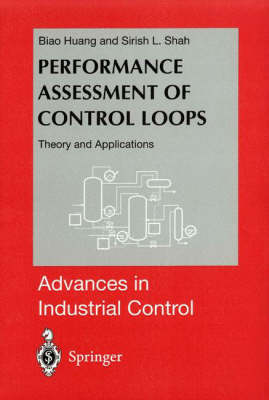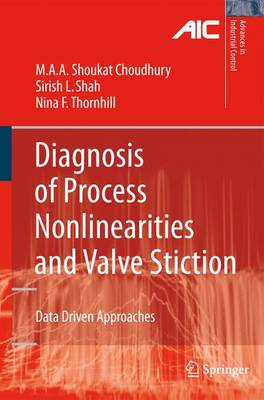Advances in Industrial Control
2 total works
Performance Assessment of Control Loops
by Biao Huang and Sirish L. Shah
Published 22 September 1999
The series Advances in Industrial Control aims to report and encourage technology transfer in control engineering. The rapid development of control technology has an impact on all areas of the control discipline. New theory, new controllers, actuators, sensors, new industrial processes, computer methods, new applications, new philosophies. . . , new challenges. Much of this development work resides in industrial reports, feasibility study papers and the reports of advanced collaborative projects. The series offers an opportunity for researchers to present an extended exposition of such new work in all aspects of industrial control for widerand rapid dissemination. Benchmarking is a technique first applied by Rank Xerox in the late 1970s for business processes. As a subject in the commercial arena, benchmarking thrives with, for example, a European Benchmarking Forum. It has taken rather longer for benchmarking to make the transfer to the technical domain and even now the subject is making a slow headway. Akey research step in this direction was taken by Harris (1989) who used minimum variance control as a benchmark for controller loop assessment. This contribution opened up the area and a significant specialist literature has now developed. Significant support for the methodologywas given by Honeywell who have controller assessment routines in their process control applications software; therefore, it is timely to welcome a (first) monograph on controller performance assessment by Biao Huang and Sirish Shah to the Advances in Industrial Control series.
Diagnosis of Process Nonlinearities and Valve Stiction
by Ali Ahammad Shoukat Choudhury, Sirish L. Shah, and Nina F. Thornhill
Published 11 September 2008
were published in the series as the contributed volume, Process Control Performance Assessment: From Theory to Implementation with Andrzej Ordys, Damian Uduehi, and Michael Johnson as Editors (ISBN 978-1-84628-623-0, 2007). Along with this good progress in process controller assessment methods, researchers have also been investigating techniques to diagnose what is causing the process or control loop degradation. This requires the use of on-line data to identify faults via new diagnostic indicators of typical process problems. A significant focus of some of this research has been the issue of valve problems; a research direction that has been motivated by some industrial statistics that show up to 40% of control loops having performance degradation attributable to valve problems. Shoukat Choudhury, Sirish Shah, and Nina Thornhill have been very active in this research field for a number of years and have written a coherent and consistent presentation of their many research results as this monograph, Diagnosis of Process Nonlinearities and Valve Stiction. The Advances in Industrial Control series is pleased to welcome this new and substantial contribution to the process diagnostic literature. The reader will find the exploitation of the extensive process data archives created by today's process computer systems one theme in the monograph. From another viewpoint, the use of higher-order statistics could be considered to provide a continuing link to the earlier methods of the statistical process control paradigm.

